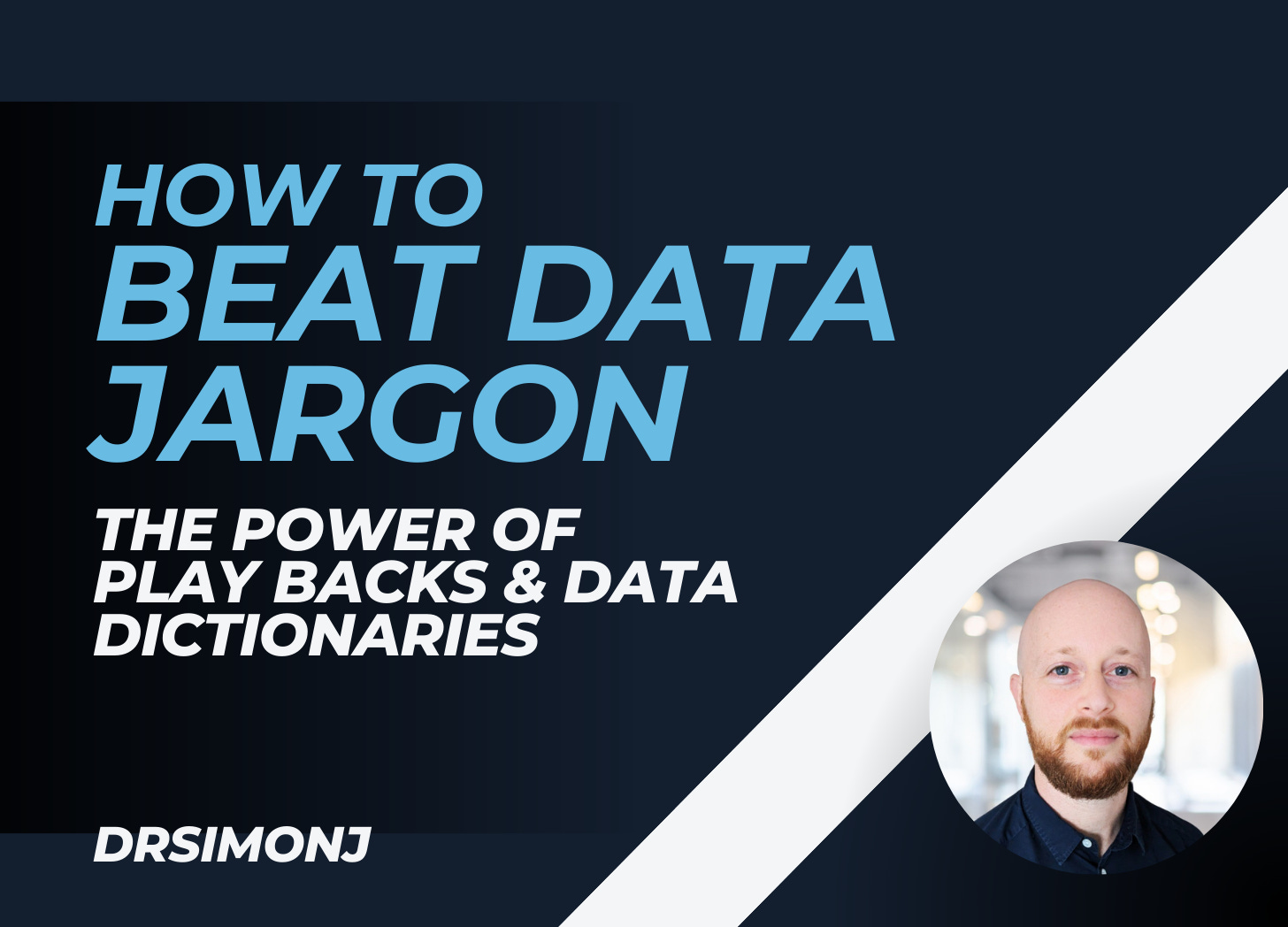How to Beat Data Jargon
The power of playbacks and data dictionaries
Few things have a step change impact on your data science and analytics career more than clear communication.
Sadly, most data folks speak a special dialect. They use words people know like “power,“ “regression,” or “feature,“ but it’s all jargon. Most people hear gibberish and they tune out.
And I get it! Data science and analytics is a highly technical field. Many of us in this field come from even more technical backgrounds. Not that it’s needed but I and plenty of my peers have a PhD. We’re trained and live in a world full of jargon.
So how do we pull ourselves out of the jargon hole? A hole we don’t even know we’re in?! Because once we do, it opens up doors to influencing others, promotions, and roles in leadership.
My Secret #1: Playbacks
Here’s my first secret weapon: ask someone to playback what I said.
That’s it! Here’s an example of a playback conversation:
[me] “We didn’t have sufficient statistical power.”
[colleague] “Errr, ok.”
[me] “Can I just check I’m being clear, what do you think I meant by that?”
[colleague] “Sure! Ummm. There was something wrong with our statistics? I’m not really sure what the problem is though.”
[me] “Ah! Ok, sort of. I meant we haven’t got enough data yet to be confident in the results. So we probably need to gather more. Is that a bit clearer?”
[colleague] “Yep, much clearer! Thanks!”
Clear communication means easily getting a message into someone else’s head. The best way to know if you’ve done it is just ask :)
My Secret #2: Data Translation Dictionary
Playbacks are a great way to solve an in-the-moment comms problem but if you really want to become a great communicator, you need to learn from those experiences.
This is where my data translation dictionary comes in. Each time you do a play back, take note of the data words/phrases you started with along side the plain-language words/phrases that were better understood.
If you build it, improve it, and note what works for different audiences, overtime you’ll build up an amazing list and ability to communicate with anyone!
Want to get started? Here’s a selection of my data translations:
Power -> Enough information to be confident
Modelled -> Learned from
Decision tree, Support Vector Machine, Neural Network, etc -> algorithm
Variance -> Noise
Null hypothesis -> Safe assumption
Alpha criterion -> Decision Threshold
Valid -> Measures what we think
Probability -> Chance
Segment -> Slice and dice
Correlate -> Tend to move together
Give me the summary, Simon!
Alright, summary time.
Worried you’re not communicating clearly enough? Ask people to playback what they think you said, then note down what works in your own data dictionary!
Overtime you’ll become a far better communicator and create step-change opportunities for your data career.


